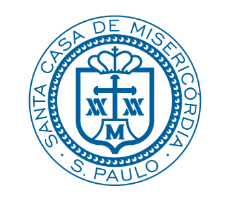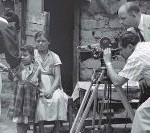November 2022
Two articles published in the latest volume of HCS-Manguinhos (vol 30, 2023) explore issues related to slaves’ health and disease in eighteenth-century South America.
The article On “the remedies and medications which were given to ailing negroes, analyzes the way sick slaves were treated at the Office (ofício) of the Jesuit Province of Paraguay and Santa Catalina Farm (estancia) between 1711 and 1745. The sources consulted – Libro de cuentas del Ofício, Memoriales, and Cartas ânuas – reveal that the sickness of the enslaved people generated expenses, not only for medications, clothing, and food but also for shrouds for their burial.
Eliane Cristina Deckmann Fleck (visiting professor at the Graduate Program in History at the Universidade Federal de Pelotas) and Antonio Dari Ramos (Professor at Universidade Federal da Grande Dourados) also analyzed cases of slaves from the Estancia de Santa Catalina. The study suggests that the enslaved people’s exhaustive working hours could be, alongside common illnesses of the period and food shortages, one of the reasons for their illness.
The article Diseases of Africans, an African disease, discusses the transformations of quijila/kijila between Central West Africa and Minas Gerais in Brazil in the seventeenth and eighteenth centuries. Quijila/kijila in the cultural universe of the Imbangala (Jaga) and the Ambundu and Kimbundu populations who lived in the Portuguese regions of Angola and the Congo did not refer to a specific illness or disease. It was any of the 14 laws or prohibitions and rituals, basically a food prohibition, but its applications and meanings varied.

Les laveurs de diamants. Unknown author. Wickipedia. Minas Gerais was the Brazilian mining district, and he activity relied on slave labor
However, in Brazil, when the concept was transported in the 1700s, it was transformed into a disease that attacked blacks, especially Africans. In sum, Junia Ferreira Furtado (Professor of the Graduate Program in History at Universidade Federal de Minas Gerais and Universidade Federal de Ouro Preto), investigates how the concept of quijila was structured, comprehended, and transformed, both in Africa and Brazil.
Fleck, E. C. D., & Ramos, A. D.. (2023). Sobre “os remédios e medicinas que se haviam dado a negros enfermos”: os gastos com a saúde e a morte de escravos do Ofício da Província Jesuítica do Paraguay, 1711-1745. História, Ciências, Saúde-manguinhos, 30, e2023036.
Furtado, J. F.. (2023). Doenças de africanos, doença africana: transformações da quijila, entre a África centro-ocidental e as Minas Gerais, Brasil, séculos XVII e XVIII. História, Ciências, Saúde-manguinhos, 30, e2023052.
Related articles in HCS-Manguinhos:
A morphology of ‘quilombos’ in the Americas, sixteenth-nineteenth centuries – The paper written by Manolo Florentino (Universidade Federal do Rio de Janeiro) and Márcia Amantino (Universidade Salgado de Oliveira) presents a study on “quilombos” in slave societies in the Americas.
Tetanus among slaves and freeborn in Brazil – Ian Read, from Soka University, talks about tetanus in 19th century Brazil. According to him, the story about health and medicine is needed to understand the transition from empire to the republic.
Slave mortality during the cholera epidemic in Rio de Janeiro (1855-1856): a preliminary analysis. Kodama, Kaori et al. Hist. cienc. saude-Manguinhos, Dez 2012, vol.19, suppl.1.
On slaves and genes – How can genetics contribute to the debate about affirmative actions aiming to mitigate the inequalities created by slavery? The anthropologist Elena Calvo-González analyses genetic studies of the Brazilian population.
Brazilian eugenics and its international connections – In the early twentieth century, when many linked Brazil’s economic and social backwardness to its racial miscegenation, anthropologist Edgard Roquette-Pinto swam against the tide, refuting the notion that the Brazilian people were “inferior” and valorizing the country’s mestizo biology instead.
Race and the Rockefeller Foundation From 1927 to 1942, the Rockefeller Foundation ran a tuberculosis commission in Jamaica. This paper explores the role that race played in it.
Capoeira circle or sports academy? The emergence of modern styles of capoeira and their global context The emergence of the modern styles of capoeira should be considered in the global context of the modernization of martial arts currently in progress in Europe and Asia on the one hand, and the new phase of Afro-descendant modernity on the other.
Ideology, science, and people in Amílcar Cabral The article explores the writings by and about Almícar Cabral, one of the most renowned figures in contemporary African history.
Cooperation between Brazil, Cuba, and Haiti This special issue of HCS-Manguinhos discusses different aspects of the cooperation between these countries.













